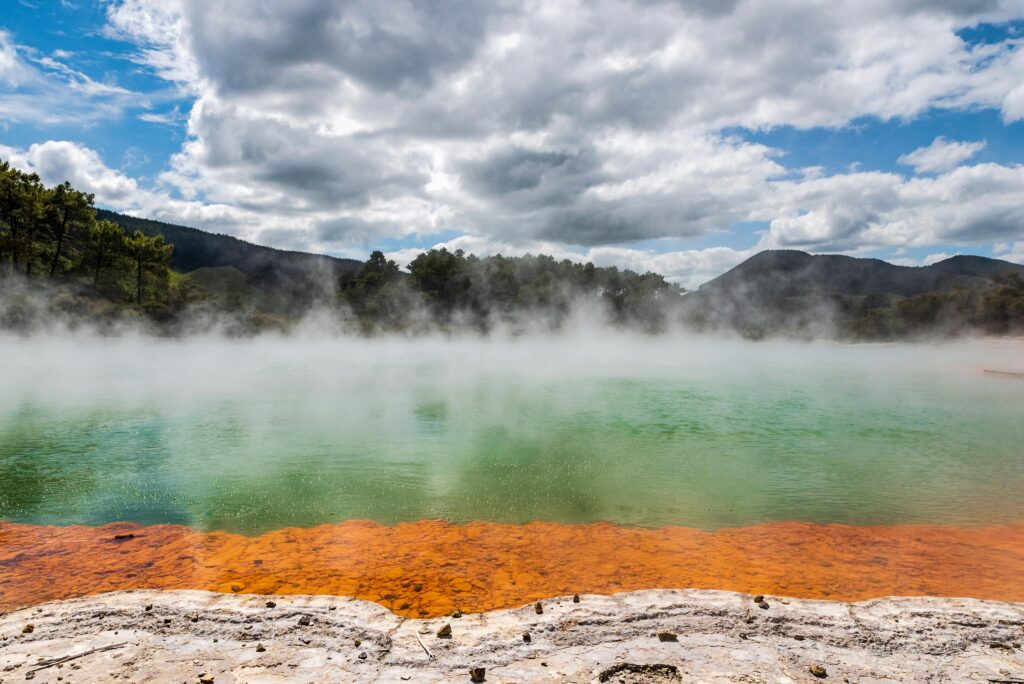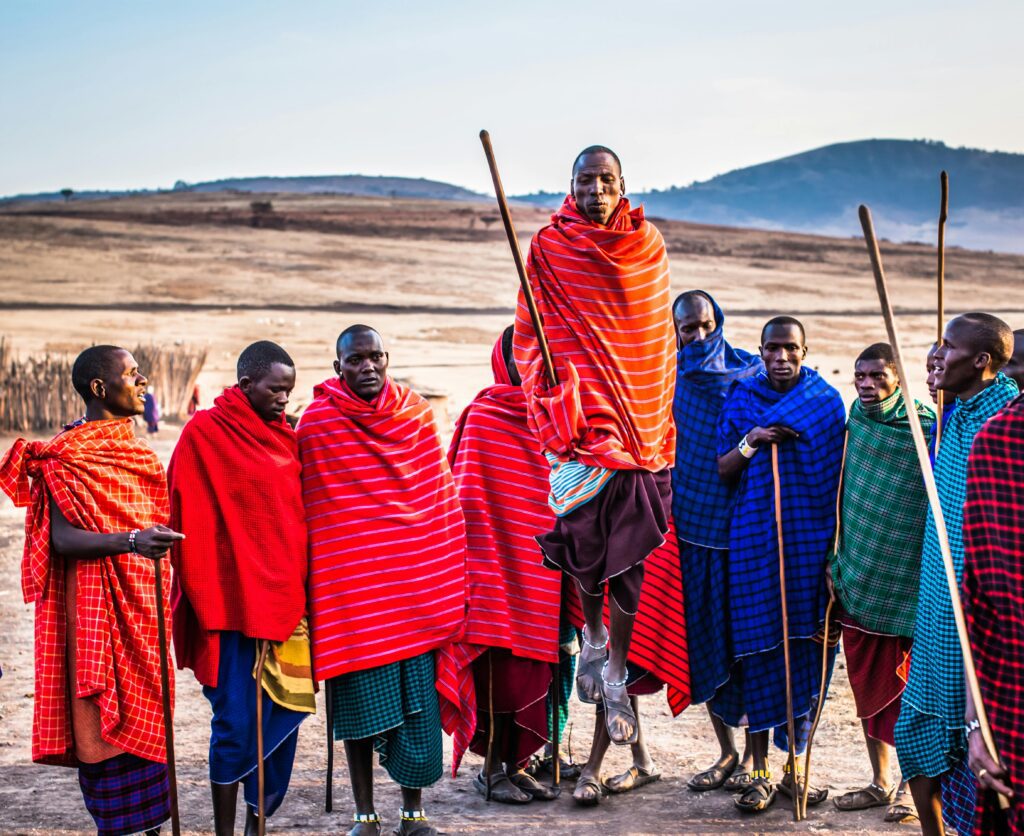“Discover Rotorua’s hidden gems with our guide to unique, off-the-beaten-path experiences. Skip the tourist traps and uncover the true beauty”
Introduction
Stepping onto Moutohora Island, I was instantly captivated by steam curling from hot springs, painting the air with an ethereal glow. Just 9 km from Whakatāne, this volcanic gem is a perfect day trip from Rotorua, New Zealand—a destination where geothermal marvels and rich Māori culture collide.

Rotorua is a sensory wonderland. The moment you arrive, the unmistakable scent of sulfur greets you—a reminder of the powerful geothermal forces simmering beneath the earth. But beyond the steam and bubbling mud, Rotorua is a place of profound cultural significance, where Māori traditions thrive alongside adrenaline-pumping adventures and serene natural beauty.
In this guide, I’ll share insider tips to help you experience Rotorua like a local, from bubbling mud pools to heart-pounding adventures, luxurious hot springs, and unforgettable cultural encounters.
Why Visit Rotorua?
- Geothermal Wonders: Witness Pōhutu Geyser (erupting 20x daily) and neon-colored pools at Wai-O-Tapu. Explore hidden thermal springs like Kerosene Creek, where you can soak under the stars.
- Māori Culture: Experience traditional haka performances, hangi feasts, and storytelling at Tamaki Māori Village or Te Puia. Learn the art of weaving and carving from master craftsmen.
- Adventure: Zipline through ancient forests with Rotorua Canopy Tours, bike the Redwoods Whakarewarewa trails, or raft the Kaituna River (home to the world’s highest commercially rafted waterfall, the 7m Tutea Falls).
- Wildlife: Spot kiwi birds at Rainbow Springs Nature Park ($40 NZD) or take a nocturnal tour at Ogo Kiwi Wildlife Park.
- Relaxation: Soak in the therapeutic waters of Polynesian Spa, voted one of the world’s top 10 spas by Conde Nast Traveler.
Pro Tip: Visit October–April for warm weather and outdoor activities, or June–August for fewer crowds and steamy thermal pools that feel even more magical in the crisp winter air.
When to Visit Rotorua for the Best Experience
Best Seasons
- Spring (September–November): Mild weather (15–20°C / 59–68°F), blooming flora, and fewer crowds. Perfect for hiking and geothermal exploration.
- Summer (December–February): Warmest months (20–25°C / 68–77°F), ideal for lake activities and festivals like the Rotorua Māori Arts Festival. Book accommodations early!
- Autumn (March–May): Cooler temps, vibrant foliage, and fewer tourists. Great for photography and budget travelers.
- Winter (June–August): Chilly (5–15°C / 41–59°F), but geothermal pools are extra inviting. Don’t miss the Rotorua Night Market for warm food and crafts.
What to Pack
- Layers: Temperatures fluctuate, especially near thermal areas.
- Swimwear: Essential for hot springs and spas.
- Sturdy shoes: For hiking volcanic trails and geothermal parks.
- Rain jacket: Rotorua is lush for a reason—expect occasional showers.
- Camera: The neon pools and geysers are a photographer’s dream.
Pro Tip: Visit Wai-O-Tapu Thermal Wonderland at 8:30 AM to beat crowds and catch the famous Lady Knox Geyser eruption (daily at 10:15 AM).
3-Day Rotorua Itinerary
Day 1: Geothermal & Cultural Immersion
Morning:
– Start at Te Puia ($60 NZD), home to the Pōhutu Geyser and the New Zealand Māori Arts and Crafts Institute. Watch master carvers and weavers at work, then stroll through the bubbling mud pools and steaming vents.

Afternoon:
– Soak in the Polynesian Spa ($30–80 NZD), where alkaline waters soothe sore muscles. Opt for the Deluxe Lake Spa for private pools with views of Lake Rotorua.
– Lunch at Eat Streat, Rotorua’s vibrant dining precinct. Try Atticus Finch for gourmet burgers or Sabroso for authentic Mexican.
Evening:
– Tamaki Māori Village ($130 NZD) for a hangi feast (earth-cooked meats and veggies) and cultural performance. The spine-tingling haka and storytelling around the fire pit are unforgettable.
Day 2: Adventure & Nature
Morning:
– Bike the Redwoods Forest (rentals from $45 NZD). The Tokorangi Pa Track offers stunning views, or try the Dipper Trail for beginners.
– Stop at Okere Falls Store for artisan coffee and freshly baked goods.
Afternoon:
– Kaituna River whitewater rafting ($120 NZD) with Kaituna Cascades. The 7m Tutea Falls is a heart-stopping highlight!
– Recover with a soak at Waikite Valley Thermal Pools ($20 NZD), where natural alkaline waters flow directly from the source.
Evening:
– Stargaze at Kerosene Creek (free), a hidden hot spring 30 minutes from town. Bring a flashlight and snacks for a magical night under the stars.
Day 3: Hidden Gems & Relaxation
Morning:
– Explore Wai-O-Tapu ($32 NZD). The Champagne Pool (orange-and-green hues) and Devil’s Bath (neon yellow) look like another planet. Arrive early for the best light.
Afternoon:
– Kayak on Blue Lake (Tikitapu) ($50 NZD for rentals). The water is crystal clear, and the surrounding forest is serene.
– Picnic at Sulphur Bay Wildlife Sanctuary, where geothermal heat creates a unique habitat for birds.
Evening:
– Sunset dinner at Urbano Bistro (try the venison with blackberry sauce) followed by a stroll along Lake Rotorua’s shores.
Off-the-Beaten-Path Rotorua

- Kerosene Creek: A free, 24/7 hot spring tucked in the forest. Locals love it—just watch for slippery rocks.
- Waikite Valley Thermal Pools: Eco-friendly and less touristy than Polynesian Spa.
- Okere Falls: Secret swimming holes and a scenic waterfall hike.
- Hell’s Gate: Lesser-known than Wai-O-Tapu but equally dramatic, with a mud bath spa ($50 NZD).
Local Experiences & Food
Māori Culture
- Tamaki Village: The most immersive cultural experience, with storytelling, song, and a hangi feast.
- Te Puia: Daily cultural performances and workshops in carving/weaving.
- Mitai Māori Village: Offers a glowworm walk and warrior canoe display.
Must-Try Foods
- Hangi: Earth-cooked pork, lamb, and kumara (sweet potato).
- Geothermal-steamed corn: Sold at roadside stalls near thermal parks.
- Capers Epicurean: A gourmet deli with local cheeses and honey.
- Third Place Café: Famous for flat whites and kumara fries.
Personal Anecdote: At a hangi feast, I learned how Māori chefs slow-cook food using geothermal heat—a 700-year-old technique! The smoky, tender flavors were unlike anything I’d tasted.
Unique Accommodations
- Tamaki Māori Village Stay: Sleep in hand-carved huts and wake to a traditional breakfast.
- Treetops Lodge: Luxury eco-retreat with private hot tubs and gourmet dining.
- Regal Palms Motel: Affordable and family-friendly, with thermal pools on-site.
Practical Tips
- Transport: Rent a car (from $50 NZD/day) or use Rotorua’s buses ($2–5 NZD per ride).
- Safety: Stay on marked paths near geothermal areas—boiling water lurks beneath thin crusts!
- Budget Tips: Free walks at Kuirau Park or Government Gardens.
FAQs
1. Is Rotorua safe with geothermal activity?
Yes, if you follow guidelines. Stick to marked paths—some pools reach 100°C (212°F). Never touch thermal water; serious burns can occur.
2. Best budget activity?
Government Gardens’ thermal walkways (free) or Kerosene Creek (free hot spring).
3. How to experience Māori culture?
Book a Tamaki Village tour ($130 NZD) or visit Te Puia ($60 NZD) for performances and workshops.
4. Best time for photography?
Dawn/dusk at Wai-O-Tapu for dramatic steam and light. The Champagne Pool glows at sunrise.
5. Family-friendly activities?
- Rainbow Springs (kiwi birds and playgrounds).
- Skyline Rotorua Luge (fun for all ages).
- Agrodome Farm Show (sheep shearing and dog trials).
Conclusion
Rotorua is where Earth’s energy meets Māori heritage, offering adventure, culture, and relaxation. Whether you’re soaking in hot springs, feasting under the stars, or racing through ancient forests, this geothermal wonderland promises unforgettable memories.
Note: Start planning your Rotorua adventure today—book your tour now!
Keywords:
1. “Rotorua New Zealand travel guide”
2. “Best time to visit Rotorua New Zealand for geothermal wonders”
3. “What to do in Rotorua New Zealand: A comprehensive guide”
4. “Top attractions in Rotorua New Zealand for adventure seekers”
5. “Discovering Maori culture in Rotorua New Zealand: A unique travel experience”



